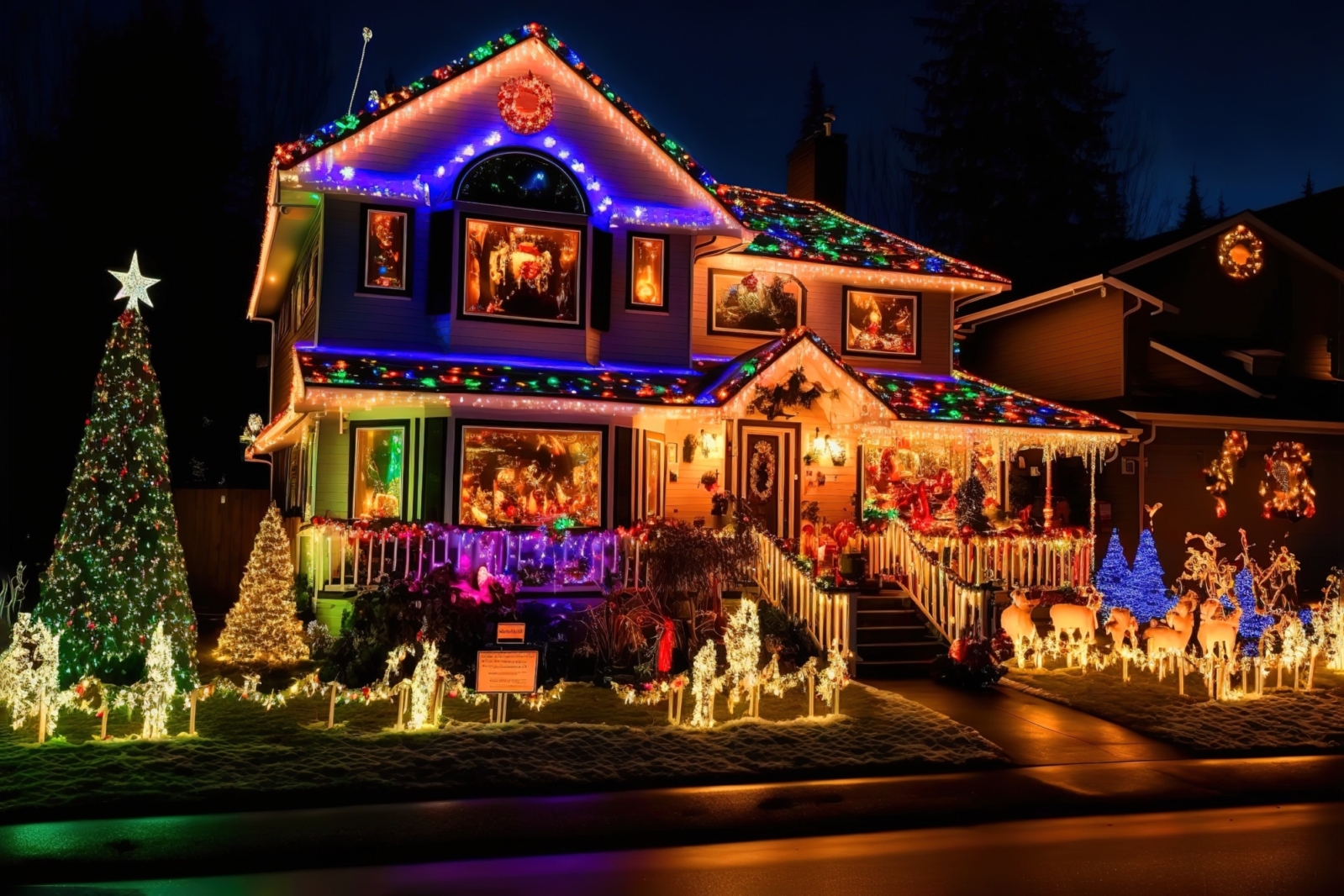The Joy of Christmas Lights: A Safe and Illuminating Guide

As the holiday season approaches, homes sparkle with festive delight as Christmas lights cast a magical glow. Yet, amidst this enchantment, concerns about safety often flicker, particularly regarding the potential fire risk posed by these radiant decorations.
The anxieties surrounding Christmas light safety aren't baseless. Yearly, reports of fire incidents, partly due to improper holiday light usage, serve as a sobering reminder of the need for caution when turning our homes into seasonal wonderlands.
Furthermore, misconceptions and myths swirl around Christmas light safety, fostering unnecessary worry and confusion. From the absurd belief that these lights attract electricity-consuming entities to the mistaken notion that LED lights are incapable of overheating—these misunderstandings abound.
In this article, our aim is to dispel these misconceptions and bring clarity to the realities of Christmas light safety. By unraveling the truth and embracing best practices, we can ensure a holiday season that's both merry and safe. Join us as we explore the science behind Christmas lights, their heat emissions, and the genuine risks they may pose.
The Inner Workings of Christmas Lights
Today's Christmas lights come in various forms, from classic incandescent bulbs to the more energy-efficient LED (Light Emitting Diode) lights. Understanding their components is key to grasping their heat output.
Incandescent Lights: These lights function by passing electricity through a wire filament, causing it to heat up and emit light. Incandescent bulbs emit considerable heat while glowing, potentially warming to the touch.
LED Lights: Conversely, LED lights operate differently, generating light through electron movement within a semiconductor material. Compared to incandescent bulbs, LEDs produce significantly less heat and generally remain cool, even after extended use.
Dispelling the Myth: Can Christmas Lights Cause Fires?
Concerns regarding Christmas lights causing fires mainly arise from the heat generated by incandescent bulbs. While these bulbs can indeed become hot during operation, the risk of them sparking a fire is relatively low if used correctly and maintained properly. The safety of Christmas lights depends on several factors:
Quality of Lights: Ensuring the lights meet safety standards and are of good quality significantly decreases the risk of malfunction or overheating.
Proper Usage: Adhering to manufacturer instructions, including avoiding electrical circuit overload, using the correct wattage, and inspecting lights for damage before installation, reduces potential hazards.
Duration of Use: Limiting continuous usage, particularly with incandescent lights, prevents excessive heating. LED lights, with their low heat emission, offer a safer option for extended periods.
Understanding Risks and Precautions
While Christmas lights themselves may not directly cause fires, certain risk factors warrant attention.
Overheating: Extended use or improper installation, such as employing damaged cords or leaving lights unattended for long periods, may lead to overheating and pose a fire risk, especially with older incandescent lights.
Electrical Issues: Overloading outlets, using damaged extension cords, or connecting multiple strings of lights together may cause electrical faults and heighten the fire risk.
Addressing Safety Concerns
Let's delve into crucial safety considerations to ensure a secure and delightful holiday season.
Make Informed Choices: Opt for LED lights whenever feasible, as they emit less heat and are more energy efficient. Ensure all lights adhere to safety standards and are in good condition before using them.
Installation Matters: Avoid overloading circuits or using damaged wires. Follow manufacturer guidelines regarding the maximum number of lights that can be connected together.
Regular Inspection: Periodically check lights for any signs of damage or wear. Promptly replace worn-out bulbs, frayed cords, or damaged sockets.
Power Off When Unattended: Switch off Christmas lights before leaving the house or going to bed. Consider using timers to automate this process.
Outdoor Safety Measures: Extra precautions are essential for outdoor Christmas light installations due to exposure to various elements.
Weatherproof Lighting: Use lights and extension cords specifically designed for outdoor use. These are built to withstand weather conditions and are sturdier than indoor ones.
Secure Installation: Ensure lights are firmly affixed to trees, walls, or structures to prevent falls or damage.
Proximity to Flammable Materials: While outdoor decorating, be cautious about placing lights near dry leaves or wooden structures, susceptible to catching fire due to overheating.
Ground-fault Circuit Interrupters (GFCIs): For outdoor light setups, use outlets protected by GFCIs. These devices prevent electrical shocks by interrupting the circuit when detecting an imbalance in electrical current.
Wrapping Up
While the concern regarding Christmas lights causing fires holds some validity, understanding the nuances of different lights and taking necessary precautions greatly mitigates potential risks. LED lights, emitting lower heat, serve as a safer alternative to traditional incandescent bulbs. Practicing proper usage, regular inspections, and adherence to safety guidelines are pivotal in ensuring a festive season free from hazardous incidents.
ALL CLEAN USA Is Here To Assist
In the event of any Christmas lighting mishaps, worry not. ALL-CLEAN USA is on standby to aid with any holiday-related emergencies that might occur. Our expert team is committed to ensuring your safety and tranquility. Contact us today for immediate assistance.


